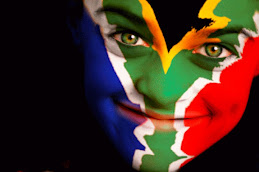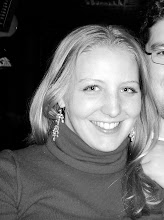 iversity campus. I was trying to convince my peers that it was in their best interest and the “right thing” to care about a pandemic happening thousands of miles away on “the problem continent” (although it is happening on a much smaller scale at home too). I helped coordinate a letter writing campaign to the US Senate in support of legislation for the President’s Emergency Plan for AIDS Relief (PEPFAR), which took place during a worship at the campus chapel. Although a profoundly different experience, this year on World AIDS Day I was also a young person among young people. But I was the student and my peers were the teachers. There was nothing spiritualized or theoretical about the day. It wasn’t advocacy; it was “real life” in a way I wouldn’t have been able to comprehend a year ago.
iversity campus. I was trying to convince my peers that it was in their best interest and the “right thing” to care about a pandemic happening thousands of miles away on “the problem continent” (although it is happening on a much smaller scale at home too). I helped coordinate a letter writing campaign to the US Senate in support of legislation for the President’s Emergency Plan for AIDS Relief (PEPFAR), which took place during a worship at the campus chapel. Although a profoundly different experience, this year on World AIDS Day I was also a young person among young people. But I was the student and my peers were the teachers. There was nothing spiritualized or theoretical about the day. It wasn’t advocacy; it was “real life” in a way I wouldn’t have been able to comprehend a year ago.The day started with a march. Hundreds of people sang, danced, carried banners, and distributed flyers and red ribbons to passers-by. Stopping traffic and making active participants of those standing on the side of the road was a powerful way to disseminate information. I had an adrenaline rush from being among so many people singing and marching, and the almost parade atmosphere of the police escort cars and people watching.
 The march was followed by a rally. There were speakers, dramas, and singers. On the field where the rally was held were mobile HIV testing sites. Each of the three trailers had several consultation rooms fully staffed by counselors and nurses. Most South Africans are “HIV ignorant.” Of the 600 people that attended the event, over 70 tested for HIV and learned their status. Knowing one’s status is extremely important in stopping the spread of the pandemic. Those who test negative are encouraged to continue practicing safe behaviors and habits. Those who test positive can take the necessary steps in getting treatment and support. The people at the rally weren’t just talking about HIV/AIDS. They were doing something to stop its spread.
The march was followed by a rally. There were speakers, dramas, and singers. On the field where the rally was held were mobile HIV testing sites. Each of the three trailers had several consultation rooms fully staffed by counselors and nurses. Most South Africans are “HIV ignorant.” Of the 600 people that attended the event, over 70 tested for HIV and learned their status. Knowing one’s status is extremely important in stopping the spread of the pandemic. Those who test negative are encouraged to continue practicing safe behaviors and habits. Those who test positive can take the necessary steps in getting treatment and support. The people at the rally weren’t just talking about HIV/AIDS. They were doing something to stop its spread. What struck me about the types of people in attendance was that they were either young or old. This year World AIDS Day fell on a Monday, which could explain why there were not as many adults present. Many were probably working. The number of young people there, especially those that participated in the program and decided to get tested, was a strong testament to power that youth can have in transforming a society. There was strength in their commitment to change, to taking ownership of their generation.
What struck me about the types of people in attendance was that they were either young or old. This year World AIDS Day fell on a Monday, which could explain why there were not as many adults present. Many were probably working. The number of young people there, especially those that participated in the program and decided to get tested, was a strong testament to power that youth can have in transforming a society. There was strength in their commitment to change, to taking ownership of their generation.The young people of South Africa have inherited so many challenges: high rates of crime and
 unemployment, limited access to quality education, and a failed health care system. These are challenges most American students and young adults cannot even fathom. As a young person myself, I know how quickly some in the older generations write me off, won't take me seriously, or condemn me as apathetic and uninterested. Many older people think youth are more fascinated by the latest video game or designer brand of jeans than becoming involved in the community. Yes, it is true, that there are many young people that do need swift kick in the pants to get off the couch. But this year on World AIDS Day, I was a witness to the power that youth can have to making a positive impact on their communities. Young people may have a lot to learn, but they also have a lot to teach, especially to their western peers.
unemployment, limited access to quality education, and a failed health care system. These are challenges most American students and young adults cannot even fathom. As a young person myself, I know how quickly some in the older generations write me off, won't take me seriously, or condemn me as apathetic and uninterested. Many older people think youth are more fascinated by the latest video game or designer brand of jeans than becoming involved in the community. Yes, it is true, that there are many young people that do need swift kick in the pants to get off the couch. But this year on World AIDS Day, I was a witness to the power that youth can have to making a positive impact on their communities. Young people may have a lot to learn, but they also have a lot to teach, especially to their western peers.


No comments:
Post a Comment